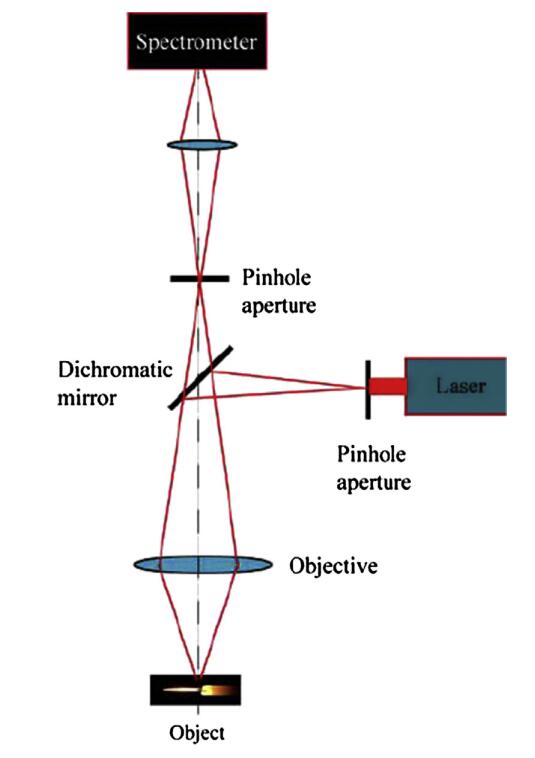Confocal Raman Microscope Service
Raman spectroscopy is a nondestructive analytical technique based on the interaction of light and materials. Raman spectroscopy provides detailed information on the chemical structure, phase and morphology, crystallinity, and molecular interactions of a sample. Spatial resolution is a key parameter in Raman imaging, which affects how well we see the sample. In micro Raman analysis, it is crucial to distinguish different structures in the sample. Therefore, the better the spatial resolution, the more detailed information can be obtained.
 Figure 1. Setup for a confocal Raman microscope. (Giridhar, G., et al., 2017)
Figure 1. Setup for a confocal Raman microscope. (Giridhar, G., et al., 2017)
At this stage, there are several methods to achieve spatial filtering, such as true confocal through a confocal pinhole and pseudo confocal through a slit, which have some differences in effectiveness.
True confocal design
It has been demonstrated that using true confocal Raman microscopy, individual particles or thin layers with scales of 1 μm and below can be analyzed. The greatest advantage of true confocal Raman microscopy is its independent spatial control and spectral resolution. This is achieved by placing a pinhole in front of the spectrometer entrance slit. The adjustable pinhole then controls the degree of confocalization and the entrance slit controls the spectral resolution of the spectrometer.
Pseudo confocal design
In a simplified configuration, researchers can control the spatial resolution with an entrance slit in one direction and a CCD detector spatial resolution in an orthogonal direction. The limitations of the spectrometer in terms of spatial resolution can lead to reduced system performance, but reducing the number of optical elements in a pseudo-confocal setup can again significantly improve the overall throughput.
Hybrid confocal design
Because both high throughput and true confocal designs offer significant advantages, Raman microscopes can be equipped with a hybrid aperture array that contains a set of pinholes and slits for use as a confocal aperture and spectrometer entrance. This hybrid design combines the advantages of both designs into one, allowing for true confocal or high throughput settings on demand.
Technical advantages
- No or little sample preparation is required for measuring solids, liquids, and gases.
- Not only is the test simple, but it can also be performed through transparent materials such as glass and plastic.
- Compounds dissolved in water can be easily detected without strong interference.
- Ideal for testing biological samples in their natural state.
Creative Biostructure has extensive experience in confocal Raman microscopy, please contact our staff to discuss the details of your project at any time.
Ordering Process
Reference
- Giridhar, G. et al. "Chapter 7 - Confocal Raman Spectroscopy." Editor(s): Sabu T. et al., In Micro and Nano Technologies, Spectroscopic Methods for Nanomaterials Characterization. 2017. 141-161.
